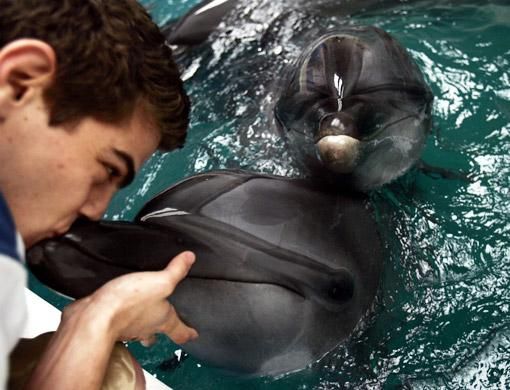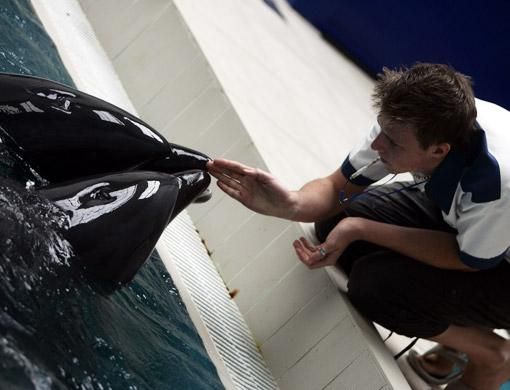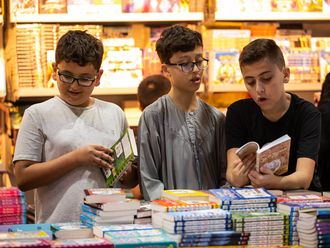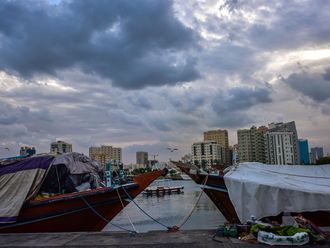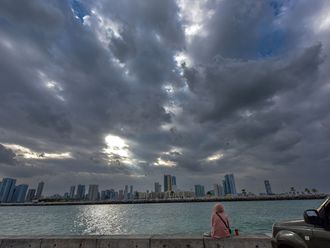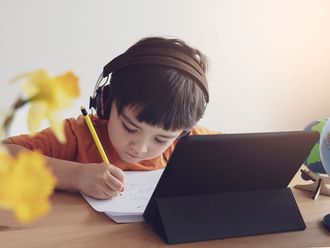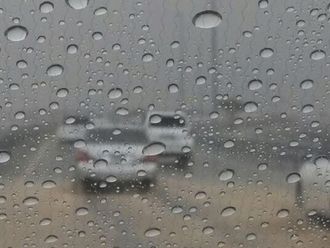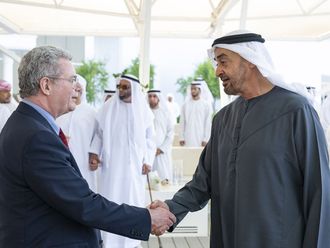Dubai: The dolphin trio at Dubai Dolphinarium has just acquired four new friends, bringing the total number of the bottlenose dolphin pod to seven. The latest recruits at Creekside Park are training and will not be participating in shows for a few months yet.
For the time being, the dolphins have not been grouped together as they need to adjust to each other. The original three dolphins acquired from the Ukraine - Senya, 22, male; Ksuysha, 20, female and Marfa, 16, female - are Black Sea bottlenose dolphins and seem to have adapted well to their environment.
The dolphinarium was opened since May this year and the dolphins perform a show 3 times a day.
The four new dolphins - Tetka, 15, female; Fekla, 15, female; Bubbles, 7, female and Jerry, 5, male - are Pacific bottlenose dolphins and have all been bought from an aquarium in Japan and landed in Dubai in early October.
Steve Preston, general manager of the dolphinarium, is aware of the scepticism that surrounds captive dolphins. "I was once told by one of the best dolphin veterinarians that if dolphins are unhappy they simply stop eating and working," he said. On arrival, the dolphins were disorientated after the flight and it is common for them to be head down and tail up. "But after 36 hours, they were fine. During the flight they travel in long boxes that are three-quarter full and they are kept moist all the time," said Preston.
The Ukrainian dolphins were born in captivity whilst the four new arrivals were wild caught but spent up to a year in an aquarium before coming to Dubai.
As Tommy Wilken, 24, marine mammal specialist from South Africa who previously worked at Atlantis, The Palm and Seaworld in South Africa puts it, "There is no pool as big as the ocean. But we want to give them the best life they can have."
Part of his job, it is understood, is that although he 'doesn't agree with it 100 per cent', it is his job to make the dolphins' life as good as possible. What strongly permeates despite the fluorescent light and white bare walls of the training pool room is the affection the trainers feel for their dolphins. "This is the best job although some people don't know how to react. We get the chance to educate as well though and teach conservation," said Wilken.
As primary trainers, Wilken and Traill Stocker, 21, also from South Africa, have between them more than 15 years of experiaence.
Half of the job is building up trust with the dolphin. Each primary trainer is in charge of one dolphin and whatever happens to that dolphin is essentially his sole responsibility. "We work with the dolphins a lot finding out what they like as toys - it can be a hula hoop, ice or fish, we teach them what the whistle means and find out what motivates the animals," said Wilken.
A day of the dolphin: Fish and personal visits
Senya, Ksuysha and Marfa demonstrate their skills during three shows everyday and spend time behind the scenes with their trainers rehearsing, playing around and gaining trust. Throughout the day, a dolphin will receive between 12 to 15 kilogrammes of fish every day, generally mackerel but also other fresh fish is fed to them. A dolphin eats about 10 to 12 per cent of its bodyweight. They will receive it during play and work, as part of training and as small rewards.
The dolphinarium also offers some one-on-one time with dolphins for people who want to experience swimming with these powerful and gentle creatures.
"The water is about 21 degrees Celsius so some people actually get cold and don't spend the full 30 minutes in the water," said Steve Preston, general manager of Dubai Dolphinarium. The water in the pools is constantly being filtered and pumped into the five-metre deep pools where the dolphins spend their time.
"The water is sea water from the creek. We filter, clean and monitor it every day," said Steve Preston, general manager of the dolphinarium. "There are a lot of parameters we check to make sure the dolphins are in excellent physical condition," he said.


